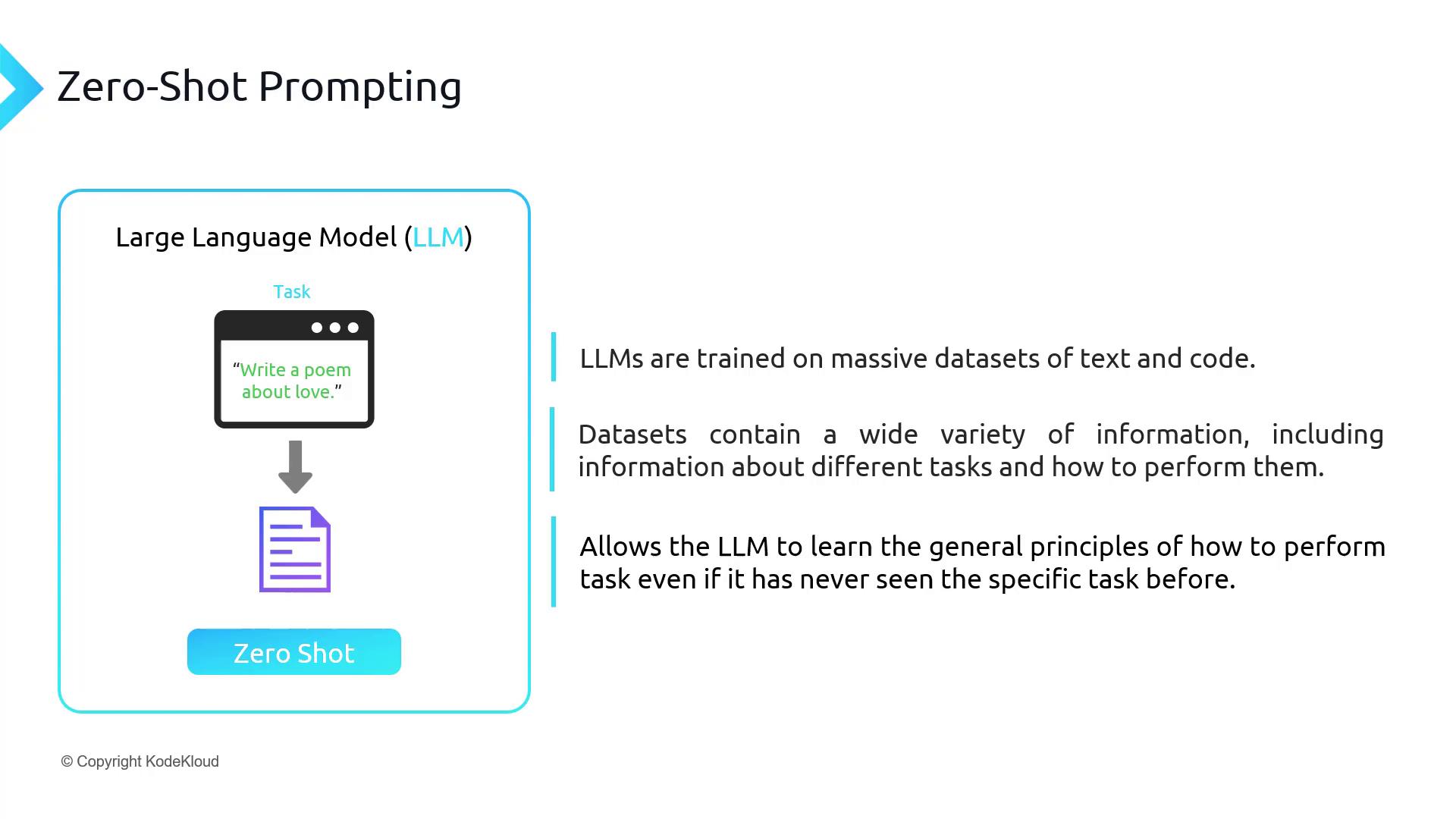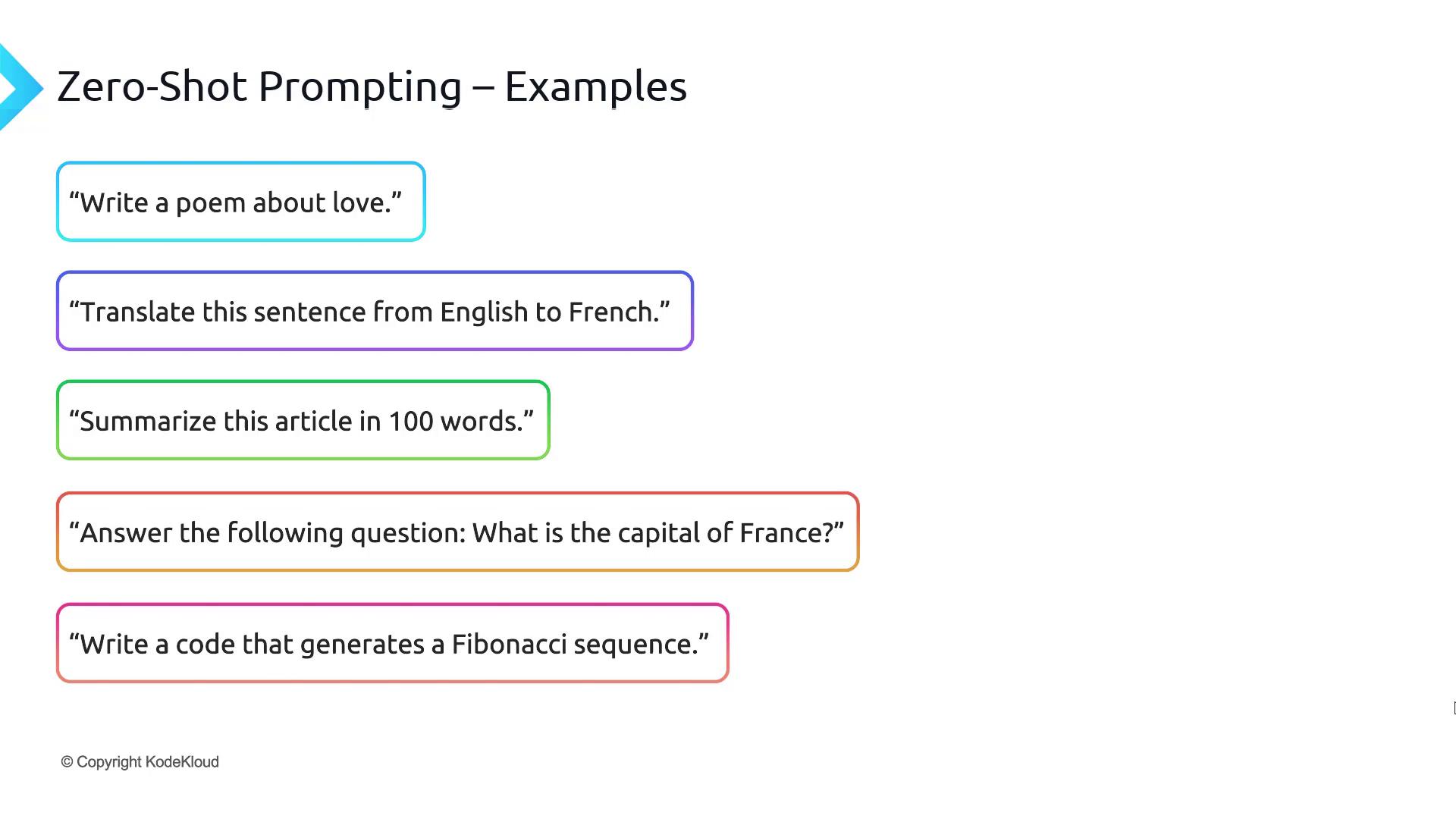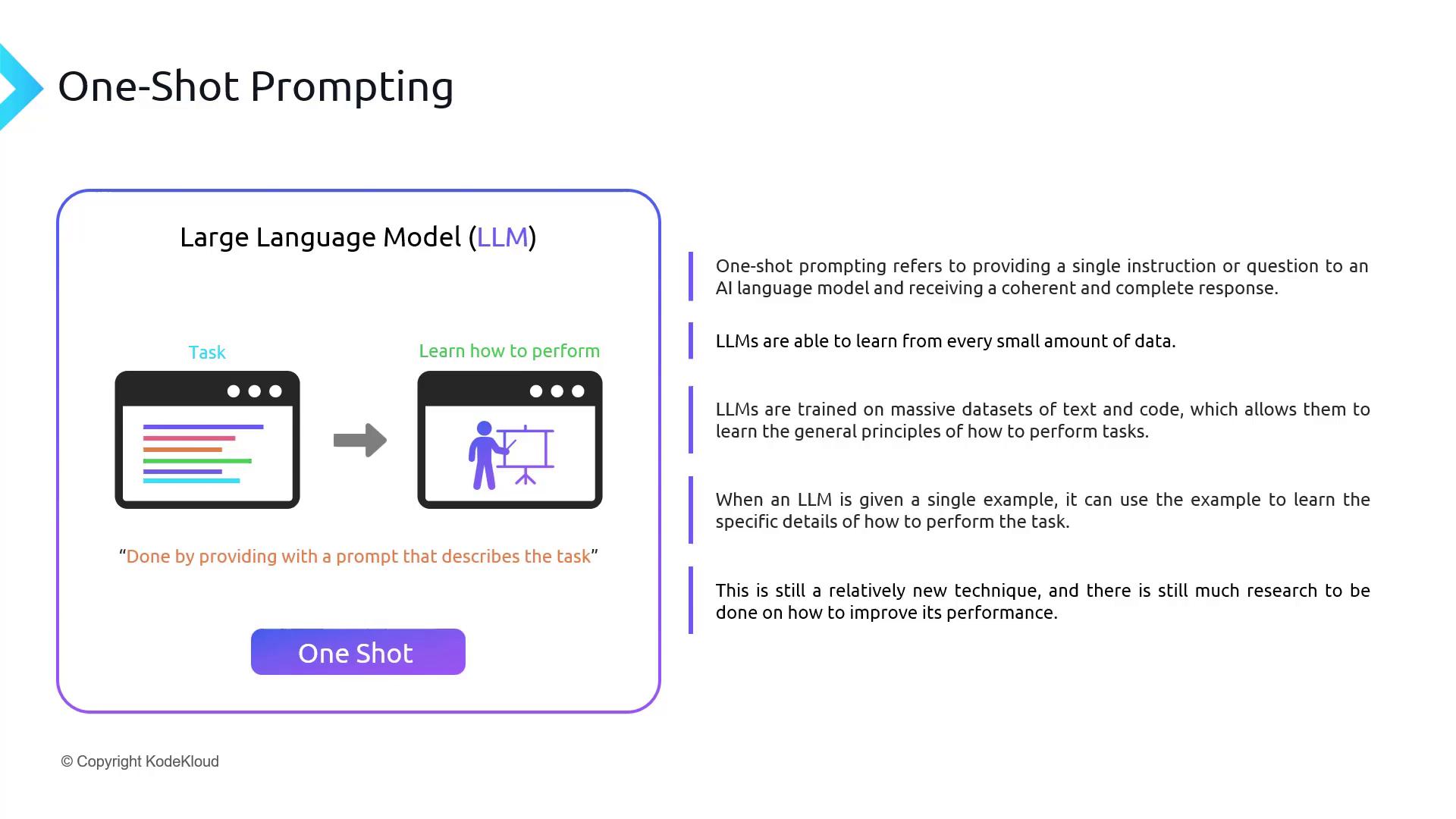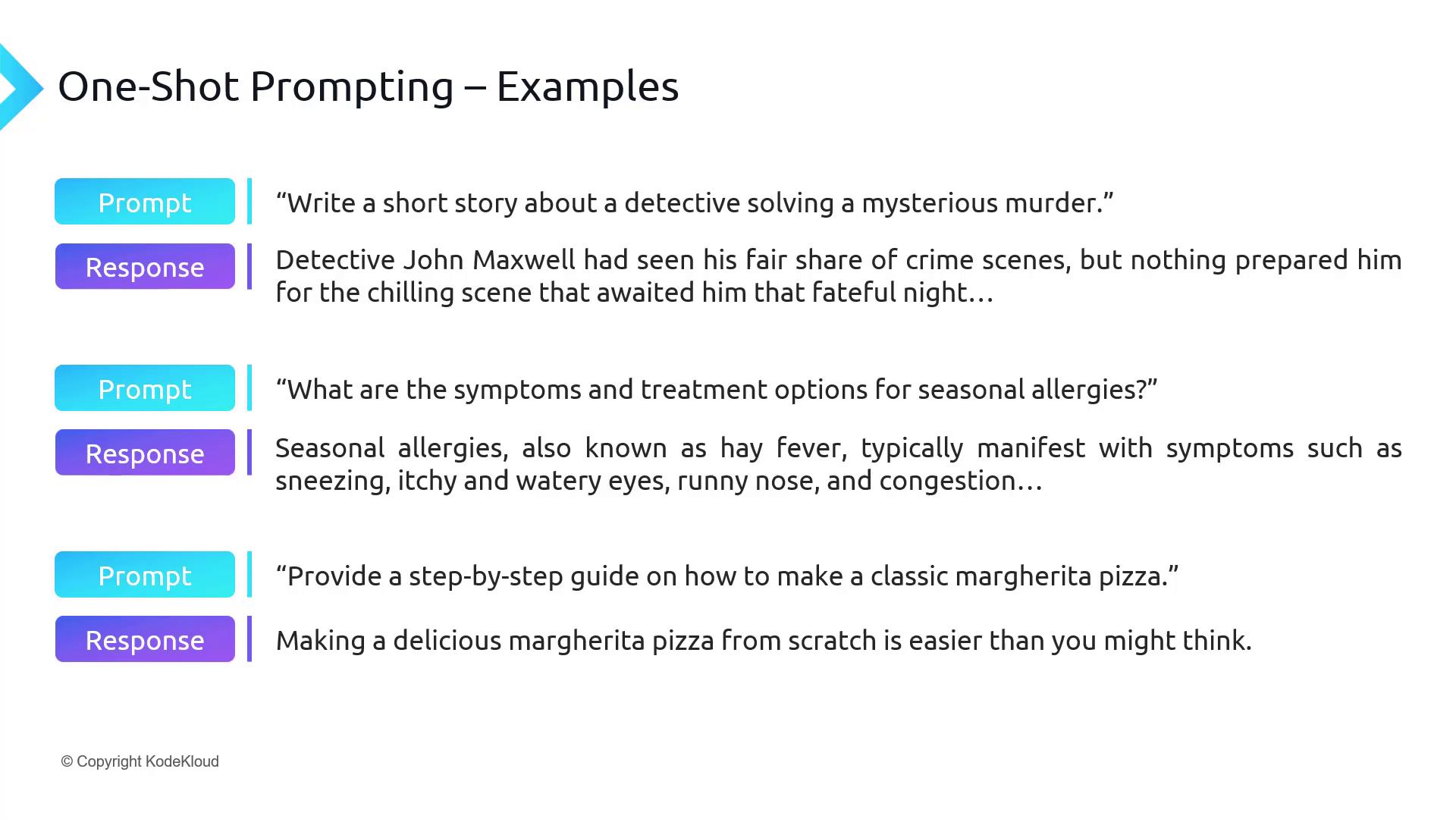Mastering Generative AI with OpenAI
Understanding Prompt Engineering
Key Techniques of Prompt Engineering
Unlock the full potential of large language models (LLMs) by mastering three core prompt engineering strategies: zero-shot, one-shot, and few-shot prompting. Each technique offers a different balance between simplicity and control, helping you guide an LLM toward your exact needs.
Prompt Engineering Techniques Overview
![]()
When designing prompts, you can choose:
- Zero-Shot Prompting: Direct instruction, no examples.
- One-Shot Prompting: Single example to illustrate format or style.
- Few-Shot Prompting: Multiple examples demonstrating the pattern.
| Technique | Definition | Example Task |
|---|---|---|
| Zero-Shot | Direct instruction without examples. | Summarize this article in 100 words. |
| One-Shot | One sample input–output pair. | Example: “Hello → Hola”. Then translate “Hi”. |
| Few-Shot | Several input–output pairs in prompt. | Classifying animals by description. |
Note
Choose zero-shot for quick tasks, one-shot when you need consistent formatting with minimal context, and few-shot for complex patterns or strict constraints.
1. Zero-Shot Prompting

In zero-shot prompting, you present only an instruction. The model draws on its pre-training to handle the request.
Write a poem about love.
Because LLMs have processed vast amounts of text and code during training, they can perform many tasks right away:

Common zero-shot tasks include:
- Translate a sentence from English to French.
- Summarize this article in 100 words.
- Answer: “What is the capital of Japan?”
- Write a Python function to reverse a string.

Tip
Zero-shot is fast to set up but may require more precise wording for specialized or nuanced tasks.
2. One-Shot Prompting

One-shot prompting provides exactly one example to illustrate the desired output. The LLM uses that single sample as a template:
Example: “Translate ‘Hello, world!’ to Spanish → ‘¡Hola, mundo!’”
Now translate ‘Good morning!’ to Spanish →
This approach often yields more consistent results than zero-shot:
- Write a short story about a detective solving a mystery.
- Describe symptoms and treatments for seasonal allergies.
- Provide steps to make a classic margherita pizza.

3. Few-Shot Prompting

Few-shot prompting includes several illustrative examples. By showing multiple input–output pairs, you help the LLM infer the pattern:
Q: A tall mammal with a long neck, spotted coat → Answer: Giraffe
Q: A large aquatic mammal known for its intelligence and sonar → Answer: Dolphin
Q: A desert animal with humps for fat storage → Answer:
This technique typically achieves higher accuracy, especially when output format or domain knowledge is crucial.
Warning
Including many examples can increase token usage and latency. Keep your prompt concise to stay within model limits.
By experimenting with zero-, one-, and few-shot prompts—and refining your instructions and examples—you’ll identify the optimal strategy for any LLM-powered application.
Links and References
Watch Video
Watch video content